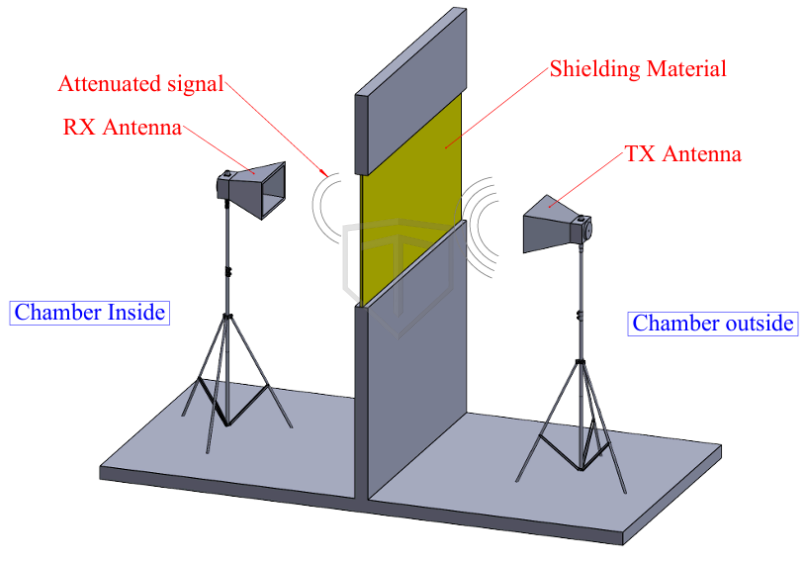Shielding Effectiveness (SE) is an essential aspect of EMC chambers, as it guarantees that the chamber fulfils its main purpose efficiently. SE quantifies how well a material or enclosure, such as a chamber, can obstruct electromagnetic fields (EMF). This measurement is usually expressed in decibels (dB), representing the ratio of the power or field strength outside the shield compared to that inside.


Eoutside: Electric field strength before the shielding (outside the enclosure).
Einside: Electric field strength after the shielding (inside the enclosure).
SE: The shielding effectiveness, showing how much the shielding reduces the electric field.
Aging Effects: Over time, gaskets, seams, and materials degrade, leading to reduced SE
Environmental Factors: Corrosion or mechanical wear can affect conductive surfaces.
Shielding effectiveness (SE) is a fundamental aspect of EMC chambers, ensuring reliable and interference-free testing environments. A well-designed chamber with high SE prevents external electromagnetic interference (EMI) from corrupting measurements and contains internal signals to avoid unwanted radiation leakage.
Ultimately, ensuring high shielding effectiveness is not just a technical necessity but a critical requirement for reliable, repeatable, and compliant EMC testing.
Copyright © 2024 – Tekiknow – All Rights Reserved Designed By Clemence Web Solutions.,